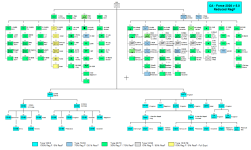Halifax Tar
Army.ca Fixture
- Reaction score
- 9,579
- Points
- 1,260
Honestly perhaps it’s better to fold the PRes Inf units into the Regular Regiments.
1-9 PPCLI
1-9 RCR
1-9 R22eR
(Or maybe 1-6 is a better idea I don’t know the numbers well enough to give an educated opinion).
To keep the symmetrical “needs” appeased you can have:
1 Light (Para) BN at 100% Regular. Domestic and international QRF’s.
1 Light (Para) BN at 30/70
1 Heavy Mech BN at 70/30 earmarked to Latvia
1 Heavy Mech BN at 30/70 earmarked to Europe
2 LAV Bn at 30/70.
For a total of 6 LIB’s, 6 Heavy Mech Inf, 6 LAV BN, which I suspect at that point you have now run out of Infanteers.
Do the same with the Armoured units etc.
Sure some of the PRes units will have angst with losing their unique “Regimental” identity, but I think the ability to train as part of an operational entity will quickly become more important.
*I also wouldn’t be against amalgamation of the majority of PRes ‘Armour’ units into the Inf LAV BN’s as crewmen to make those blended Cavalry units.
I like the idea. I would make provincial Inf Bns, with our current ARes regiments converted into Coys and Platoons (size dependent) of that provincial Inf Bn. The Provincial Inf Bn would then in turn be cap badged into RCR, PPCLI or R22R depending on geo location.
You could carry this on for all the arms including Svc Bns. Example, 36 Service in Halifax, would become a reserve coy of 2 Service Bn. And would have parent child relationship with 2 Service with expectation of the Reg Bn to provide training and employment opportunities for the Reserve Bn folks to leverage and develop and hone skill sets.



